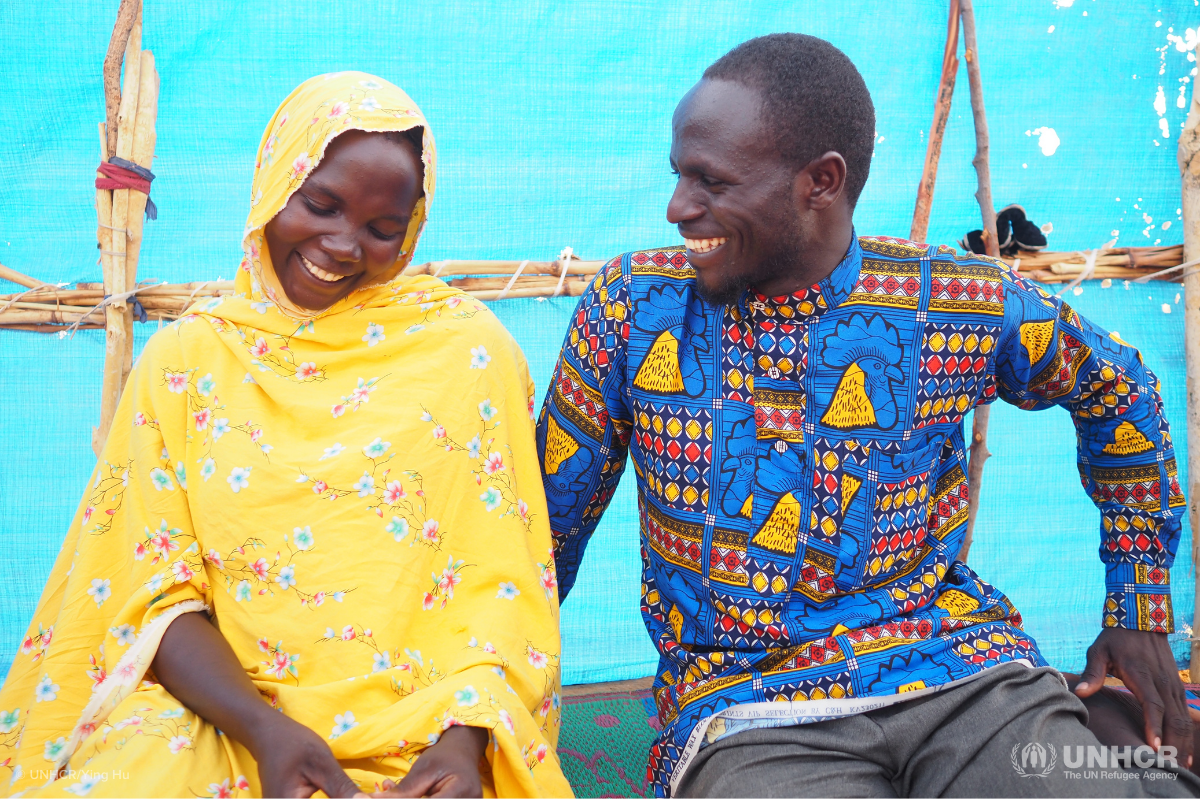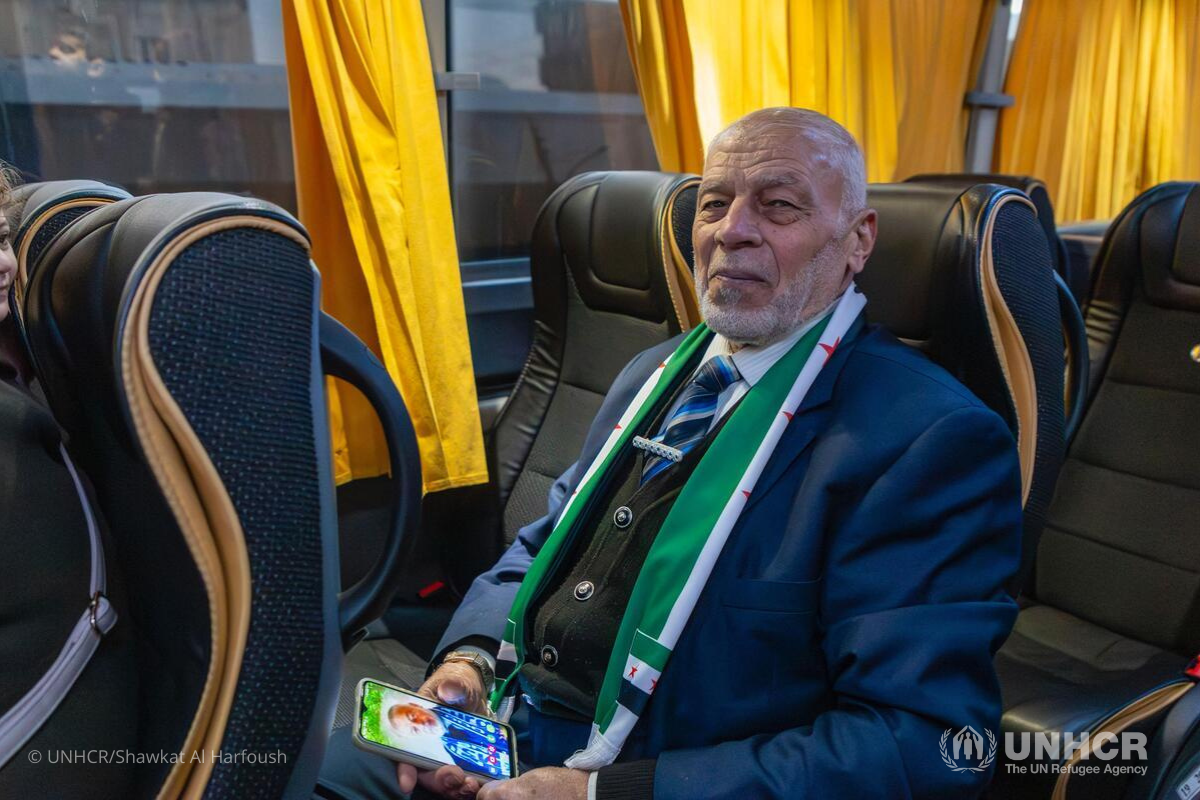How the climate crisis is driving forced displacement in these five countries
Increased temperatures, droughts and flooding, rising sea levels, and earthquakes are just some of the ways climate change is affecting regions across the globe. But no one is feeling the effects of the climate crisis as intensely as those forcibly displaced from their homes.
People who have been forced to flee their homes because of war, violence or persecution have endured so much to seek safety — severe weather events exacerbate existing vulnerabilities such as poverty, food insecurity and access to health and education services. These conditions make the journeys for refugees even more perilous and often force many people to flee more than once.
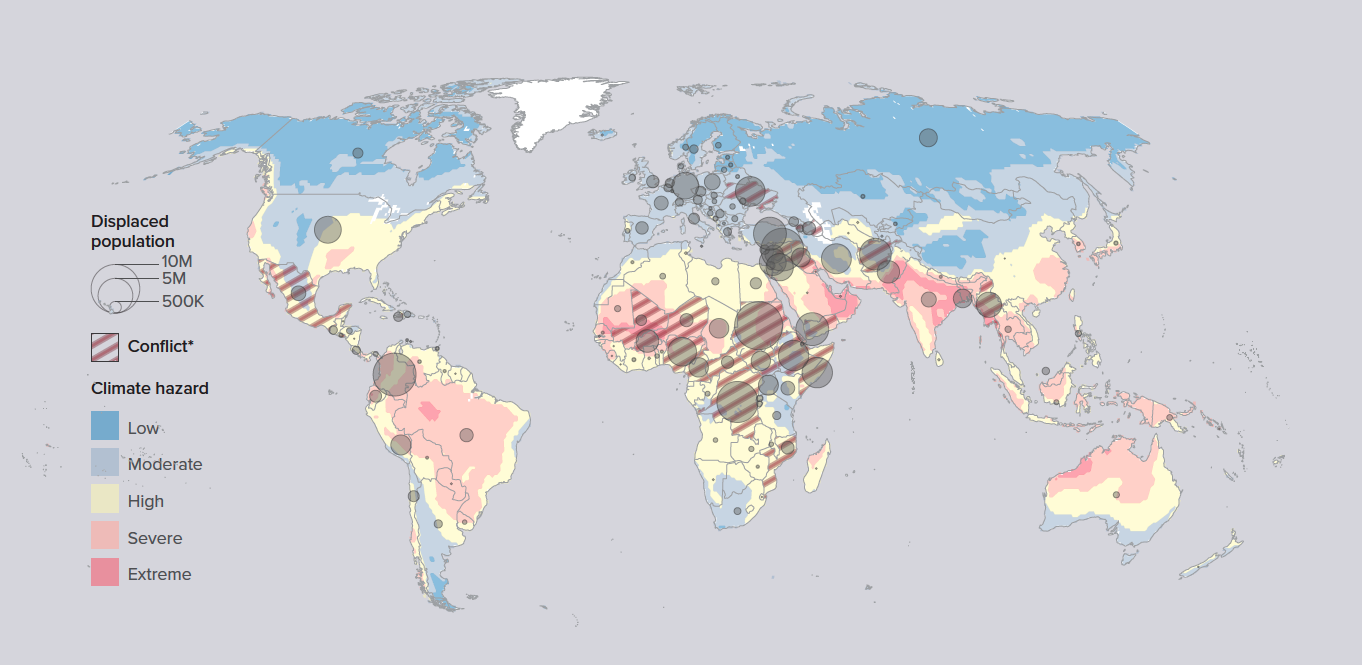
Countries experiencing severe levels of climate-related hazards and conflict include the Democratic Republic of the Congo, Somalia, Sudan, Syria and Yemen. In these countries, options for protection are limited, and options like local integration as a safe and sustainable solution for forcibly displaced people are more challenging.
Learn more about how climate change affects forced displacements in these five climate hotspots, and how UNHCR, the UN Refugee Agency, is stepping up to protect those who have been forcibly displaced.
Democratic Republic of the Congo
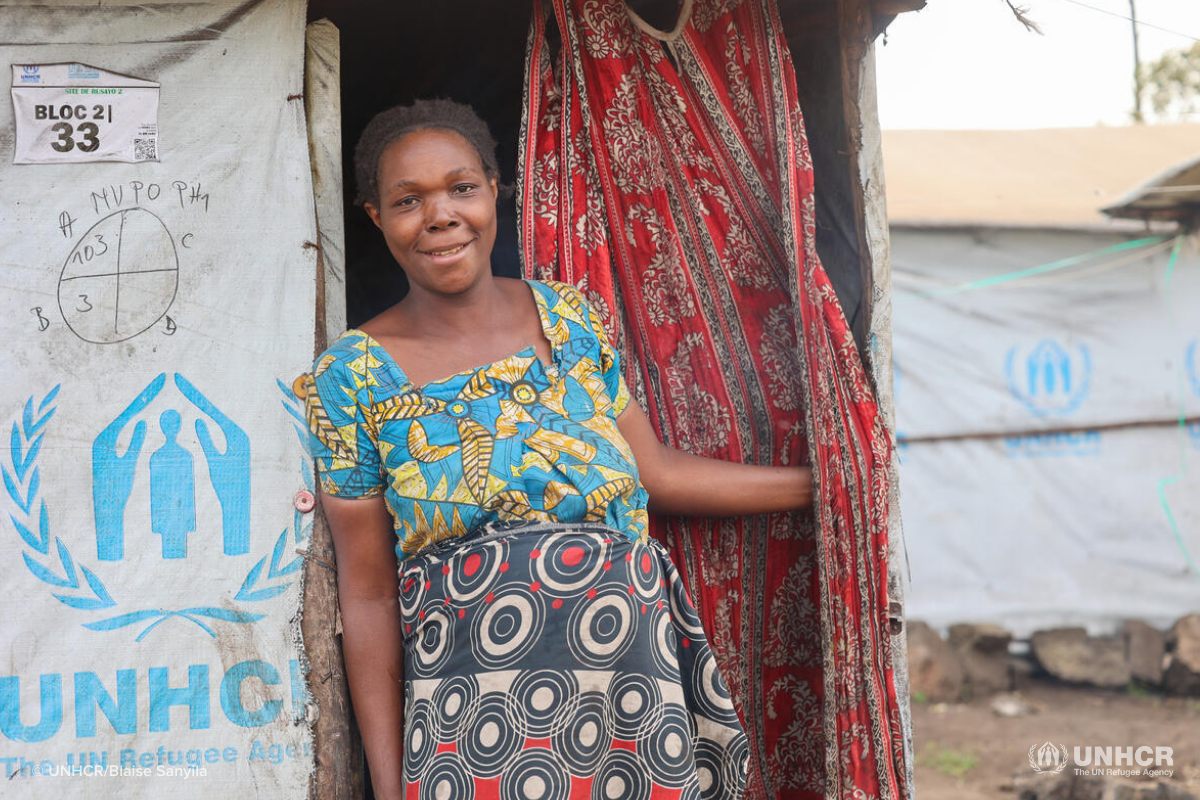
The Democratic Republic of the Congo (DRC) currently faces a complex array of challenges that are all impacted by the effects of climate change. Conflict among armed groups has triggered food insecurity, forced displacement and serious human rights violations. In some regions of the country, severe flooding has aggravated outbreaks of several high-impact epidemics, such as Ebola, cholera, COVID-19 and mpox.
Furaha (above) is an internally displaced person (IDP) who has sought safety in the North Kivu region of the DRC with her eight children. In August 2024, the risk of smallpox and mpox infections rose significantly, with more than 300 cases confirmed in the North Kivu region in just one week. Furaha is doing what she can to prevent the spread of mpox, but the conditions of their settlement make it challenging.
“I've taken measures: I wash more of my food, my plates and I've put enough cleanliness in my yard, my children have reduced their games because we don't know where mpox contamination can come from,” Furaha shares.
To help prevent the spread of the virus among forcibly displaced people, UNHCR is working with communities to provide education, awareness and training on mpox prevention.
Somalia
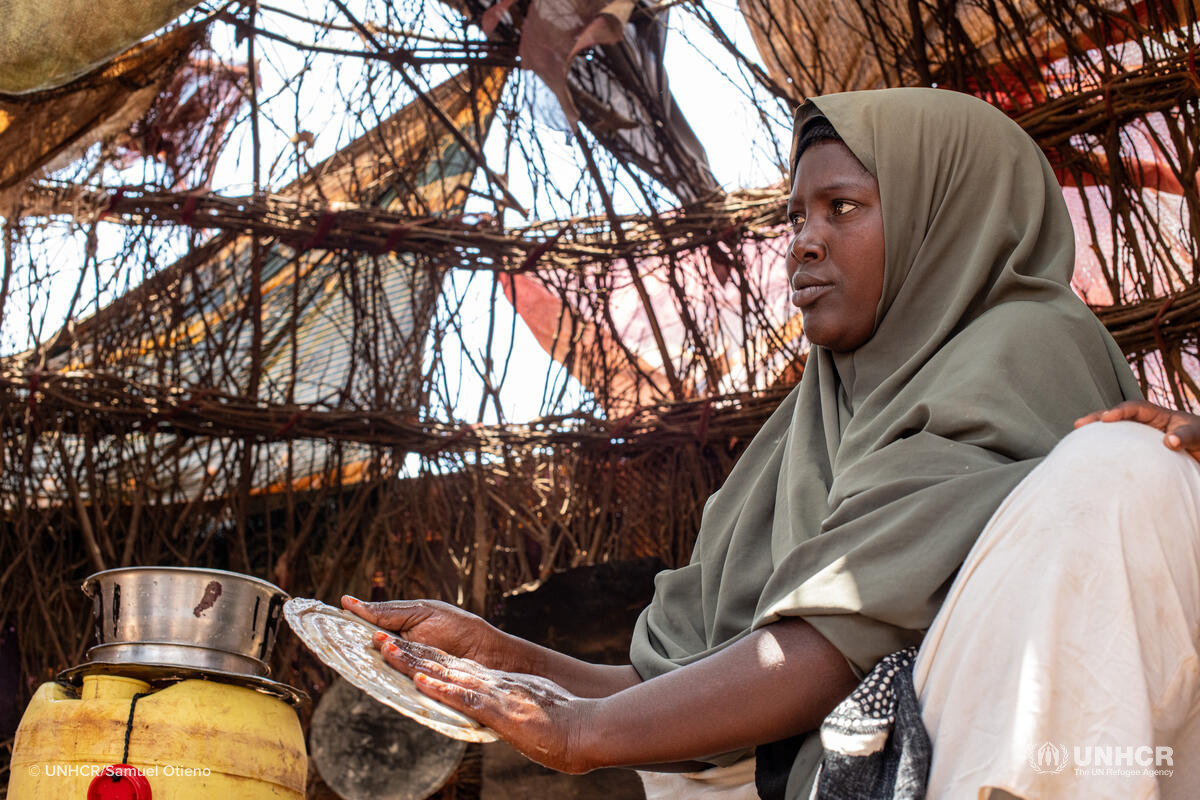
Hajira, a 33-year-old refugee from Somalia, was forced to flee her home in 2022 due to severe drought — the worst drought the country had seen in decades. She lost her crops and livestock and fled to Kenya with her eight children to find safety. Hajira and her family are just a few of the more than 600,000 refugees living in Kenya’s Dadaab and Kakuma refugee camps. Kenya continues to be one of the top refugee-hosting countries in Africa, primarily hosting refugees from Somalia, South Sudan and the Democratic Republic of the Congo.
Although rain returned to the Horn of Africa in early 2024, it brought with it severe weather and flooding that has created new problems in the region. Between January and June 2024, more than 260,000 people have been impacted by the severe weather, with another 700,000 expected to be affected as the rainy season continues. In urban areas where drainage is poor, the risk for water- and vector-borne diseases increases significantly.
Sudan
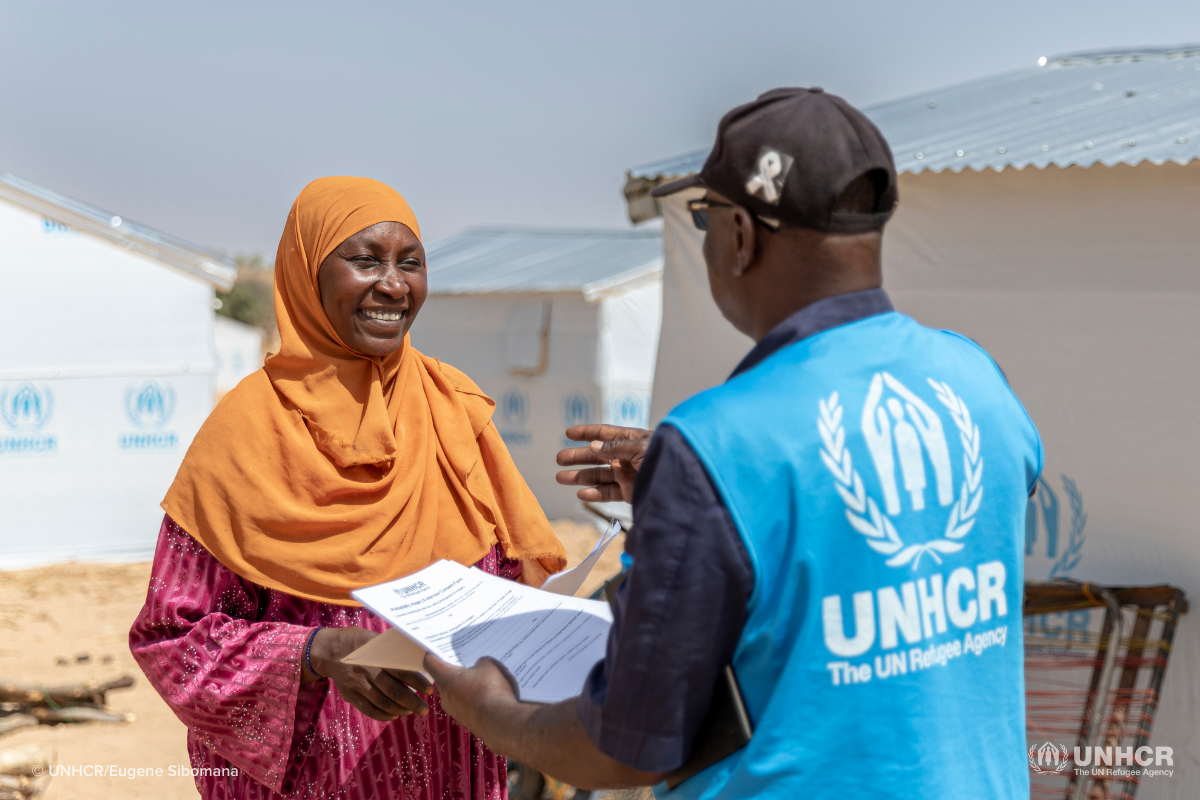
Among all the countries affected by both forced displacement and climate change, Sudan has the largest number of forcibly displaced people who are exposed to climate-related hazards and conflict. Sudan is historically one of the largest refugee-hosting countries in Africa, offering refuge to more than one million displaced people at one point. However, conflict in the region has forced more than 3.7 million people to become internally displaced and forced more than 220,000 from the country entirely.
Hawida is a mother of six and a former teacher from Sudan. The outbreak of conflict forced her family to flee their home to Chad, where UNHCR stepped up to offer them aid and protection. “We are grateful to have found safety and protection here in Chad,” Hawida says. “We have hope for the future, and the shelter and assistance provided have made us feel secure and supported.”
In Sudan and other countries throughout the region, seasonal rains and subsequent flooding can delay deliveries of humanitarian aid to families who need it, like Hawida’s. UNHCR is working to combat these challenges by implementing rainy season preparedness measures, such as drain and canal maintenance.
Syria

In February 2023, devastating earthquakes struck Syria, further exacerbating the protracted displacement crisis in the country. Many individuals who had already been forcibly displaced from their homes due to conflict, violence or persecution were forced to flee again in the aftermath of the disaster. More than a year later, internally displaced families are still recovering from the effects of the earthquakes.
UNHCR is on the ground in cities throughout the country helping the more than 7.2 million IDPs rebuild their homes. One of UNHCR’s primary activities in the country is installing shelter packages that allow families to return to their homes safely and with dignity. These shelter packages restore the integrity and functionality of homes, providing doors, windows, water tanks and electrical cables.
Yemen

Along with Syria and the DRC, Yemen has one of the largest internally displaced populations in the world at 4.5 million people. Yemen is also one of the largest humanitarian crises in the world, with approximately 73 percent of the country’s population relying on humanitarian assistance to survive. In addition to conflict, the country is plagued by severe weather that exacerbates violence, damages shelters and makes delivering humanitarian aid challenging.
In July 2024, heavy rains caused extensive damage to IDP homes, affecting more than 34,000 families who have already been displaced for years. Flooding from the rains also raised concerns about the outbreak of waterborne diseases and increased the risk of unexploded ordnances (including mines, bombs, shells and other explosive devices) that were dislocated by the flooding.
In response to the flooding and other severe weather events in the country, UNHCR and partner organizations work to assess damage as quickly as possible so they can provide shelter, aid and cash assistance as necessary to protect displaced people.
How you can help…
UNHCR, the UN Refugee Agency supports the full journey of refugees who have been forced to flee violence, war and persecution. Our donors help refugees in their greatest time of need with shelter, food, water and medical care, and their support builds awareness for resettled refugees living in the U.S. With your help, more refugees will have the opportunity to build peaceful lives and give their families a bright future.
